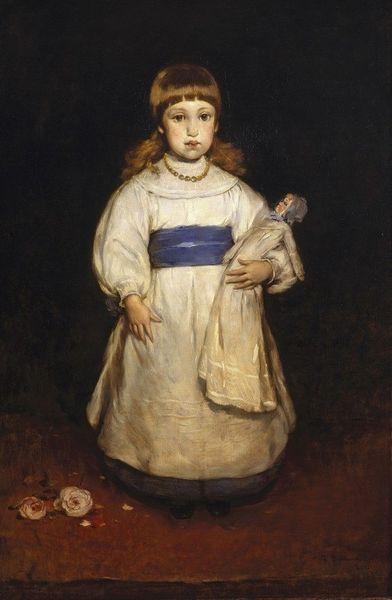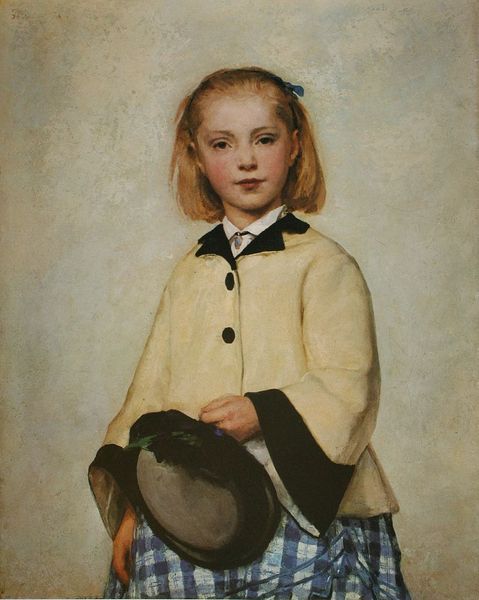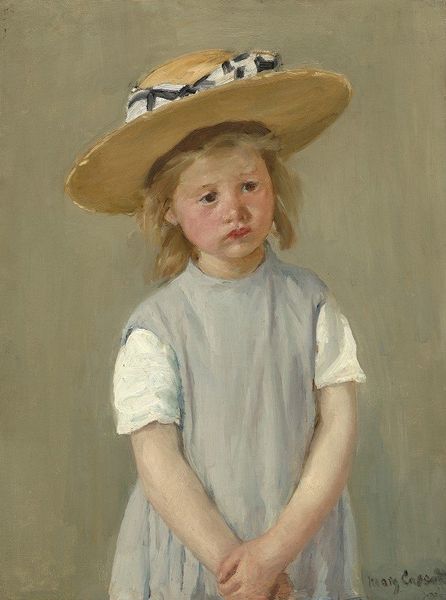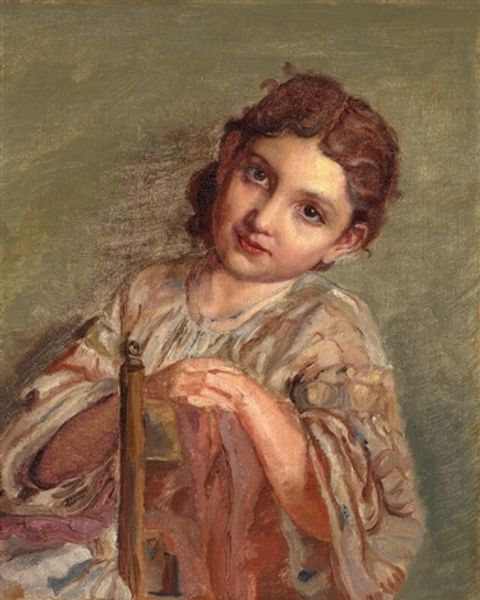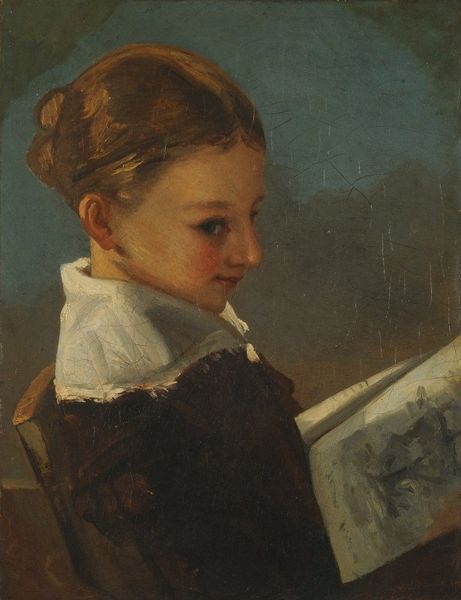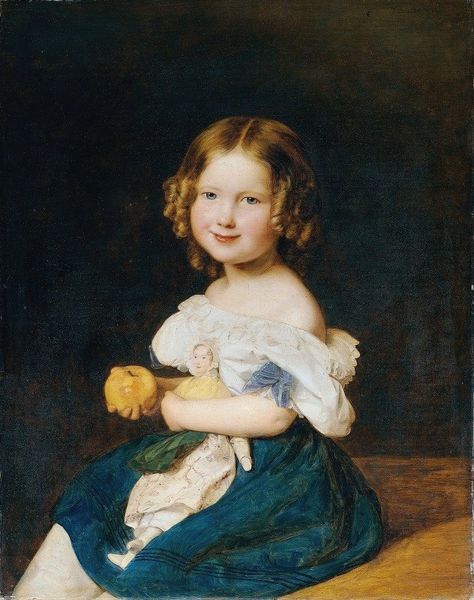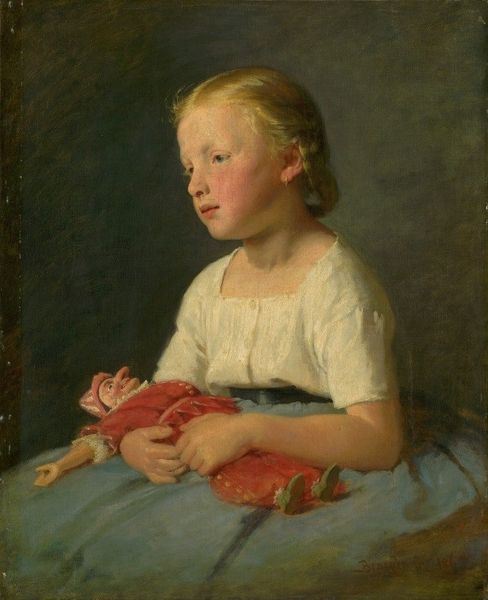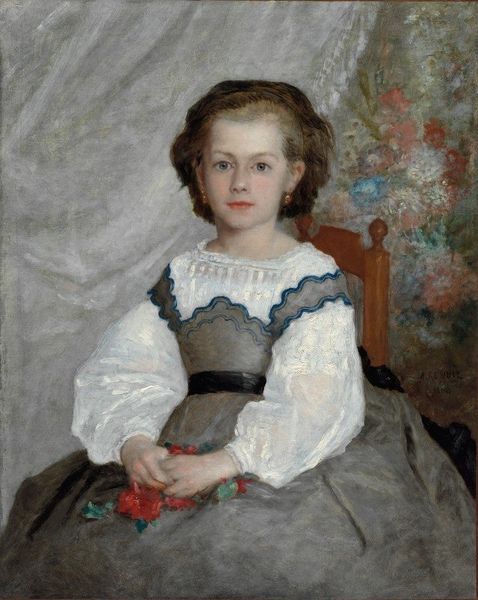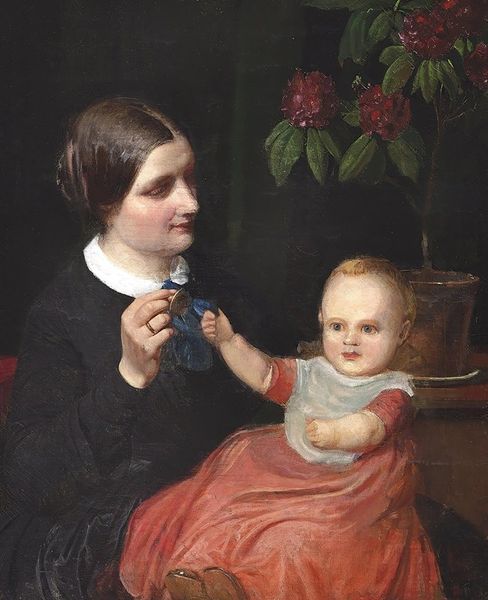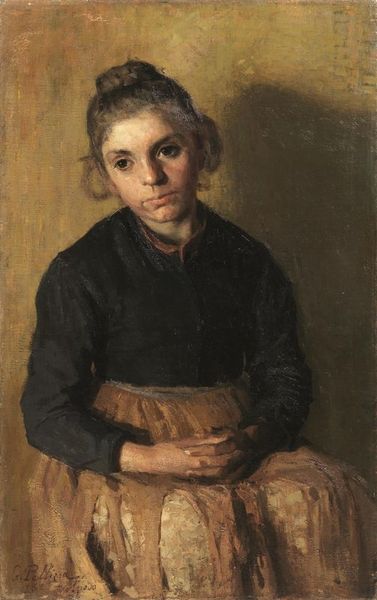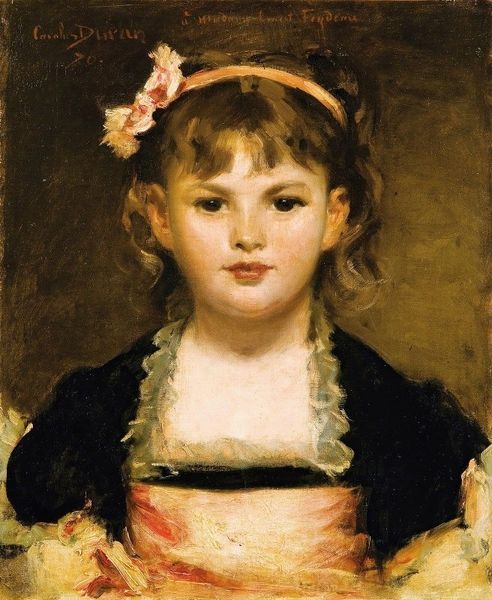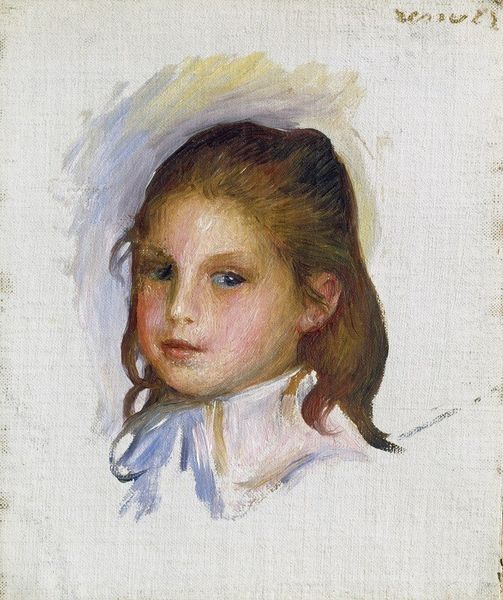
plein-air, oil-paint
#
portrait
#
plein-air
#
oil-paint
#
oil painting
#
romanticism
#
genre-painting
Copyright: Public Domain: Artvee
Curator: This is "Little Girl with a Doll" by Camille Corot, an oil painting, likely done en plein-air, though it is undated. Editor: There’s something quite somber about it. The girl’s gaze is direct, yet her expression is subdued. The muted color palette and rather loose brushstrokes give it a raw, unfinished feel. Curator: Absolutely. Consider the context in which Corot worked. While he's often associated with the Barbizon school and their idyllic landscapes, works like this prompt us to delve into the social realities of 19th-century childhood and representation. Was Corot intending a sentimental portrayal or something more probing? Editor: I can't ignore how the formal arrangement mirrors a type of symbolic symmetry. The circular tabletop and the doll mimic the curve of her dress, leading the eye to circle in and out, inviting questions about representation. How does the painter’s approach, that sketchy quality you mentioned, reinforce the work's message? Curator: Indeed. Corot's choice to render details somewhat ambiguously is intriguing, potentially drawing attention to class dynamics in portraiture and artistic representation. The little girl’s direct, steady gaze pierces through conventional sentimental representation. How is her access determined by gender and societal expectation, for example. Editor: Good point. But on a technical level, observe Corot's skillful juxtaposition of texture: the soft dress in contrast with the coarse wooden surface beneath really guides the viewer’s perception of depth, form and tone. This combination seems vital. Curator: Precisely! Thinking about Romanticism, this piece can push us to reassess that paradigm through more inclusive readings of identity and personhood that counter previous art-historical canons and look beyond solely Eurocentric lenses. It challenges us. Editor: The interplay he establishes between shadow and light makes it more complicated, offering us so many things to perceive. It’s not something that allows for only one specific explanation, as the artist’s intentions, though significant, have changed for the viewer and critic today. Curator: True enough. We must acknowledge that this image has traveled across time, acquiring newer valences, particularly around evolving attitudes toward childhood. It reflects a broader concern with the rights and position of children, which is why its place feels very powerful to reflect on in a collection today. Editor: A lot to consider when thinking about this portrait, its mood and material rendering create a rich starting point to generate wider conversations.
Comments
No comments
Be the first to comment and join the conversation on the ultimate creative platform.
